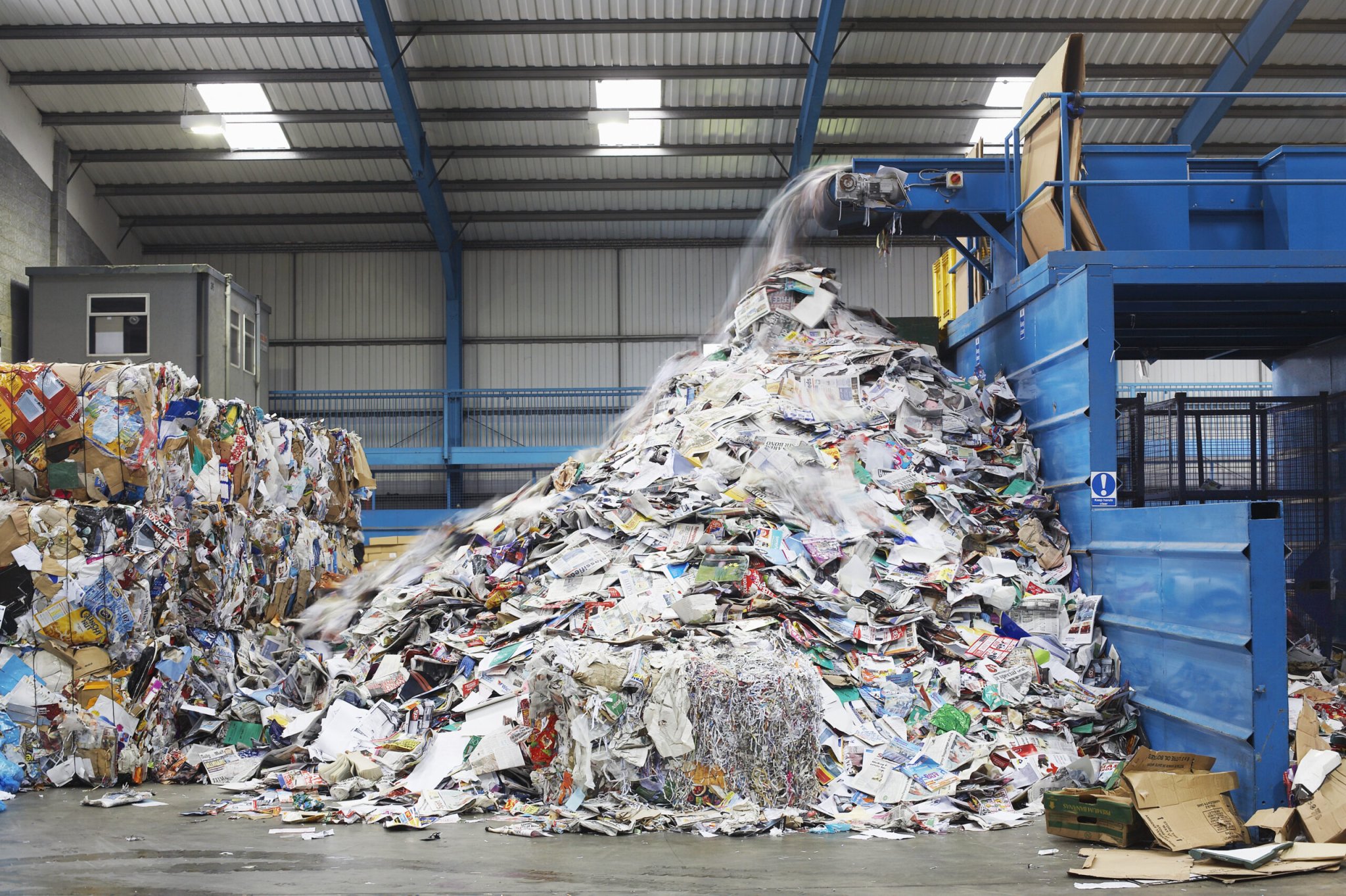

We’re having a bit of a recycling crisis.
Last week, officials in India announced that the country would no longer accept post-consumer plastic imports, in an effort to fight the pollution emitted in processing the often highly-contaminated loads the U.S. and other countries have been sending over.
The ban won’t fully go into effect until August, but will only compound the problems America has been facing with its recyclables.
A little over a year ago, China also stopped accepting most recycling imports, including post-consumer paper and plastic. In some places in the states, especially on the West Coast, waste companies have had to dump recyclables at the landfill, since they are no longer able to cheaply export the scraps on ships to China .
Meanwhile, Americans continue to enthusiastically fill their curbside bins. Recycling rates have consistently increased since the 1960s, according to Environmental Protection Agency data. As of 2015, 34 percent of waste was recycled, though since the start of single-stream recycling—the use of catch-all bins for paper, plastic, and aluminum—we’ve gotten worse at recycling, says Kate Bailey, policy and research director at Ecocycle, a nonprofit recycling organization in Colorado. Perhaps it’s aspirational: we want things to be recyclable, and so we place them in the blue bin hoping they’ll be reborn as a park bench or insulation in a jacket. Or perhaps we’re just confused.
But here’s the problem: One of the reasons countries are refusing U.S. recyclables is because they’re so contaminated. Much of what we put in our green and blue bins is non-recyclable waste, including hazardous materials.
“When we collect the material, it has as much as 25 percent contamination, but by the time we sell it it needs to have less than one percent,” says Susan Robinson, senior director of sustainability and policy for Waste Management, which operates 100 recycling sorting facilities in North America. The company sells its materials to domestic recycling plants, so its operations have remained mostly unchanged. But, says Robinson, “[contamination] increases our costs, it causes safety problems, and it increases the environmental burden.”
“A lot of people want so badly for things to be recycled,” she adds. “We call that wish cycling—it’s one of the biggest problems we have right now.”
Here’s the reality of recycling, and how you can do better.
What not to put in the recycle bin
“Three times a day, we stop the plant and somebody climbs up onto the equipment with a box knife and cuts the plastic bags off of the pipes,” says Kate Bailey, “We have several people pulling them out before they even get to the equipment, and then we still have this many bags getting caught.”

Robinson describes a similar scene at Waste Management plants. “We spend about 140,000 hours a year just cleaning out plastic films out of all the gears and equipment in our recycling facilities.”
Instead of clogging up these facilities, Robinson says you should take your bags back to the grocery store—many have bins to collect plastic bags, which can be recycled with proper equipment. It’s just that the sorting facilities for curbside recycling are not built for thin films that get stuck and tangled.
Scrap metals, like old pipes, are also common contaminants, says Bailey. These materials are recyclable, but need to be hauled to a facility that can handle them.
Crushed cans and cartons can contaminate recycling too, because they’re harder to sort out when flattened.
Diapers and syringes also wind up at Ecocycle’s facilities, says Bailey. They’re not only not recyclable, but hazardous to workers.
Do this instead
Paper products and containers made of glass and aluminum are usually accepted. Plastic is more confusing, but if you stick to bottles, tubs, jars, and jugs, it’s hard to go wrong, says Bailey. Containers need to be empty. “With things like peanut butter, you don’t really need to scrub it all out, it doesn’t need to be pristine,” says Bailey. “[But] we appreciate if you can give it quick rinse.” Food residue attracts pests like rats, racoons, and wasps to facilities. In paper products, food can actually ruin the material, making it unrecyclable. “If you have a really greasy, cheesy pizza box, for example, we ask people to compost it instead of recycling it,” says Bailey.
For plastic containers, put the lid back on. “The end markets now actually want the lids,” says Robinson. But, she adds, they need be on the bottle or they’ll get thrown away. Bailey confirms that many facilities are now accepting lids, but adds that this is only true of “plastic on plastic.” Remove lids on mixed materials, like metal lids on glass jars.
For other types of plastic, check in with your local waste hauler to see what they accept. Many have guides on their websites.
Drop these materials straight into your curbside bin—don’t bag them up. This is another hassle for facilities, some of which simply throw away bagged recyclables. “When those bags come to a recycling facility, they get pulled out and put into the trash,” says Robinson.
Reduce and Reuse
While your plastic jars, jugs, tubs, and bottles are usually recyclable, there’s a lot of plastic out there that isn’t. Styrofoam, bubble wrap, and many types of food packaging (including chip bags and candy wrappers) are a few examples. Plastic-lined paper products, including disposable coffee cups, are also destined for the landfill. “Less than 10 percent of plastic ever made has been recycled,” says Bailey. “Recycling is not the answer for plastics … There’s a lot of plastics we’re simply never going to be able to recycle.”
Bailey recommends using reusable shopping bags, coffee mugs, and to-go boxes instead of their disposable counterparts. Even with these efforts, though, you’ll still encounter non recyclable packaging. In that case, Bailey says, “please use your voice and tell the company that you’d love to see something that’s more recyclable.”
